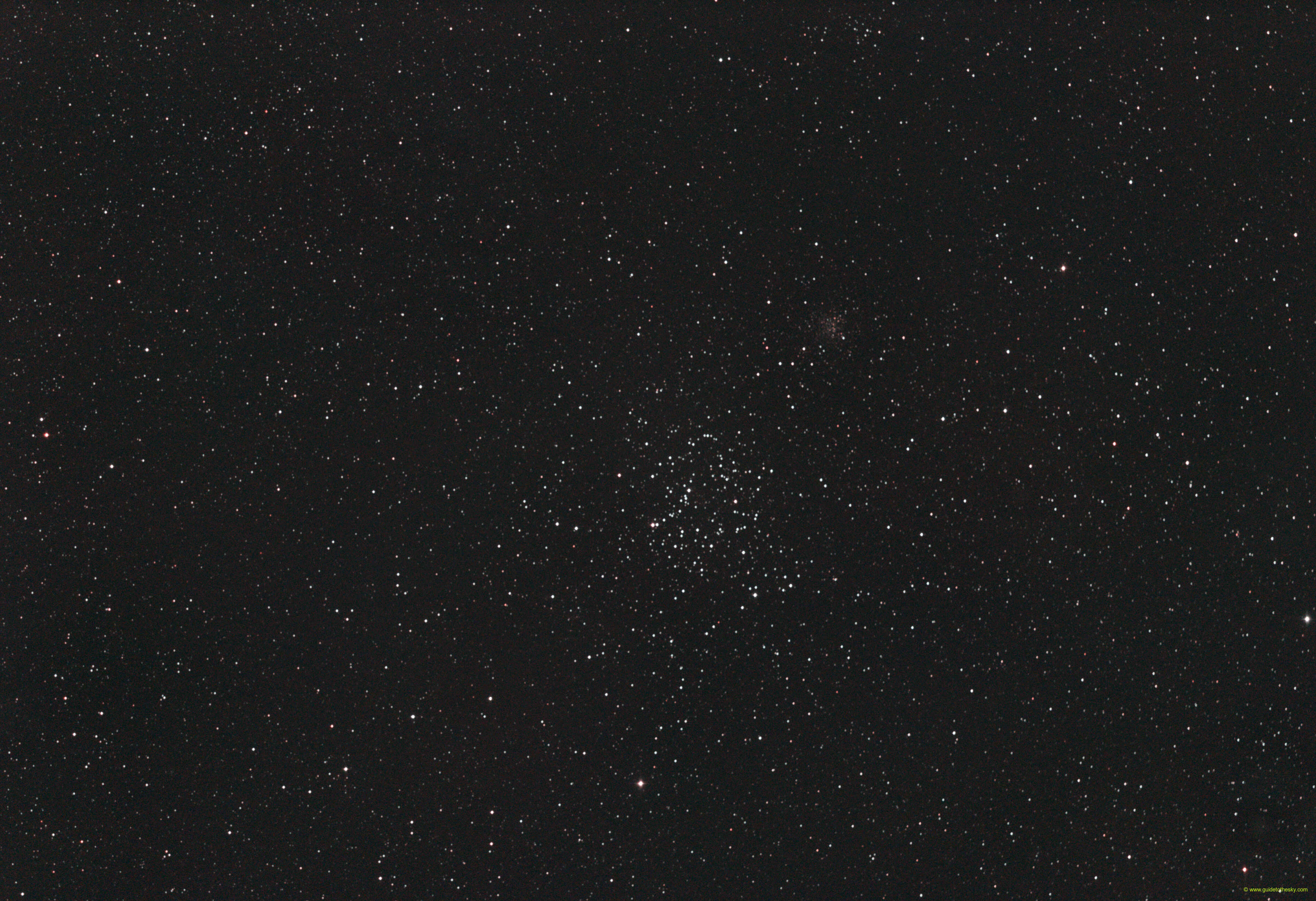Messier 35 - Gemini

M35 tiene un tamaño aparente superior al de la Luna llena y está formado por estrellas azuladas, las más brillantes son la 9ª Magnitud. Por ello, M35 es bastante poblado de estrellas ya que tiene una magnitud conjunta de 5.1. Dista {{object[0].M35.mesDistances[0].dist }} {{ object[0].M35.mesDistances[0].unit }}
A menos de 20' al SW de M35 tenemos a NGC 2158, otro cúmulo, mucho más débil, de la 8.5 Magnitud, pero mucho más lejano: 4.3Kpc esto es más de 12000 años luz.
Otros cúmulos abiertos, aún más débiles y lejanos podemos observar a menos de un grado al SW de NGC 2158: IC 2156 e IC 2157.
M35 - Cúmulo de las hevillas de zapatos - en la IA
Messier 35 (M35), also known as NGC 2168, is a beautiful and relatively bright open cluster in the constellation Gemini. It's a popular target for amateur astronomers and easily visible with binoculars or a small telescope under dark skies.
Here's a breakdown of key information about M35:
Key Facts:
- Type: Open Cluster
- Constellation: Gemini
- Right Ascension: 06h 09m 00s
- Declination: +24° 21' 00"
- Distance: Approximately 2,800 light-years (estimates vary slightly)
- Apparent Magnitude: 5.3 (easily visible with binoculars under good conditions)
- Diameter: Approximately 24 light-years across
- Estimated Age: 150 million years
- Number of Stars: Estimated to contain between 500 and 1,000 stars.
- Notable Feature: Often observed along with the smaller, more distant globular cluster NGC 2158, which appears nearby in the same field of view.
Observational Information:
- Best Time to Observe: Winter months (December-February) when Gemini is high in the night sky.
- What to Look For: Through binoculars, M35 appears as a hazy patch of light. A small telescope reveals a scattering of many bright, blue-white stars. Larger telescopes reveal even more stars and allow you to resolve the cluster more fully. Look for color variations in the stars, with some showing hints of yellow or orange, especially among the older, more evolved members. The nearby NGC 2158 is much smaller and fainter, appearing as a fuzzy spot with even a small telescope.
- Tips for Observation: Dark skies are crucial for observing M35 and especially for detecting NGC 2158. Use averted vision (looking slightly to the side of the object) to help your eyes pick up fainter details. Low magnification eyepieces generally provide the best view of the entire cluster.
Significance and Interesting Features:
- Open Cluster Evolution: M35 provides astronomers with a valuable opportunity to study stellar evolution, as its stars are all relatively young and formed around the same time. By analyzing the properties of the stars in M35 (brightness, color, spectra), astronomers can test and refine theories about how stars age.
- Stellar Population: The stars in M35 are mostly main-sequence stars, which are actively fusing hydrogen into helium in their cores. However, some of the brighter stars have already evolved off the main sequence and are becoming red giants or other more evolved types.
- Relative Youth: At 150 million years old, M35 is a relatively young open cluster. Over time, the cluster will slowly disperse as individual stars are pulled away by gravitational interactions with other stars and gas clouds in the galaxy.
How to Find It:
- Locate Gemini: Find the constellation Gemini, which is easily identifiable by its two bright stars, Castor and Pollux.
- Use Star Hopping: Starting from the star Tejat Posterior (Mu Geminorum), locate the bright star Propus (Eta Geminorum).
- Extend the Line: Draw an imaginary line from Tejat Posterior through Propus and extend it about the same distance again. M35 will be located near that point.
M35 is a rewarding target for amateur astronomers of all levels. It's a beautiful object to observe and a great reminder of the vastness and wonder of the universe.
Más información sobre Messier 35 en NASA/IPAC.
Mapa alrededor de Messier 35
Otros identificadores de M35:
"[KC2019] Theia 203","C 0605+243" ,"M 35" ,"NGC 2168" ,"OCl 466.0" ,"[KPR2004b] 87" ,"[KPS2012] MWSC 0754",

